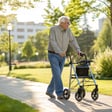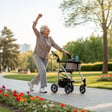Good lighting does more than just brighten a room. It creates security, prevents accidents, and contributes to overall wellbeing.
The Connection Between Home Lighting and Safety
When we talk about home safety, we often think about locks, alarms, and security systems. But lighting plays an equally crucial role in creating a secure environment. Proper illumination helps prevent falls, deters potential intruders, and creates a sense of comfort for everyone in your household.
According to home safety experts, inadequate lighting contributes to approximately 30% of home accidents. This is particularly concerning for older adults and people with certain health conditions who may have vision or mobility challenges.
"Lighting is one of the most overlooked aspects of home safety," notes Sarah Jenkins, an occupational therapist who specializes in home modifications. "Yet it's often the simplest and most cost-effective safety improvement you can make."
Strategic Lighting for Fall Prevention
Falls represent one of the most common household accidents, especially for older adults. The National Institute on Aging emphasizes that proper lighting is essential for preventing these incidents.
Key Areas to Focus On:
- Stairways: Install lights at both the top and bottom of stairs. Consider motion-activated lights that turn on automatically when someone approaches.
- Hallways: Ensure corridors are well-lit throughout, eliminating shadowy areas where someone might trip.
- Bathrooms: Good lighting is critical in this high-risk area, particularly around the shower and toilet.
- Nighttime pathways: The route from bedroom to bathroom should be clearly illuminated at night.
One approach that works well is using nightlights strategically throughout your home. Janet, who recently helped her mother adapt her home after a fall, told me, "We installed motion-sensing nightlights in the hallway and bathroom. They've made such a difference—Mom no longer stumbles around in the dark when she gets up at night."
Home Lighting Safety for People with Dementia
For individuals living with dementia, lighting plays a particularly important role in creating a safe and supportive environment. The Alzheimer's Society recommends several lighting adjustments to make homes more dementia-friendly.
Proper lighting can:
- Reduce confusion and disorientation
- Minimize visual hallucinations that sometimes occur in dimly lit spaces
- Help maintain normal sleep-wake cycles
- Reduce anxiety and agitation that may occur in poorly lit environments
"We found that increasing the lighting in Dad's home by about 30% made a remarkable difference in his confidence moving around," explains Michael, whose father was diagnosed with Alzheimer's three years ago. "We also eliminated shadows that were causing him confusion."
Consider using higher wattage bulbs (within fixture limits) and adding supplementary lighting in areas where your loved one spends the most time. Avoid glare and harsh lighting, which can be disorienting and uncomfortable.
How Can I Improve My Home Lighting for Better Health and Safety?
This is a common question, and the answer involves more than just adding brighter bulbs. Here's a comprehensive approach:
- Conduct a lighting audit: Walk through your home at different times of day and night to identify dark spots, glare problems, and inconsistent lighting.
- Layer your lighting: Combine ambient (general), task (focused), and accent lighting to create well-balanced illumination throughout your home.
- Consider color temperature: Cooler, bluer lights (4000-5000K) promote alertness and are good for working areas, while warmer lights (2700-3000K) create a relaxing atmosphere for evenings.
- Install dimmer switches: These allow you to adjust lighting levels according to time of day and activities.
- Use motion sensors: These are particularly helpful in entryways, hallways, and bathrooms to ensure lights come on automatically when needed.
The Heart Foundation also notes that proper lighting supports recovery for heart attack patients who are increasing their physical activity at home. Well-lit exercise areas reduce the risk of falls or accidents during rehabilitation exercises.
Smart Lighting Solutions for Enhanced Safety
Technology offers innovative ways to improve home lighting safety. Smart lighting systems can:
- Be programmed to mimic occupancy when you're away
- Gradually brighten in the morning to support healthy wake cycles
- Automatically adjust based on natural light levels
- Be controlled remotely or via voice commands, reducing the need to navigate in the dark
"After my heart attack, I installed smart bulbs throughout my house," says Robert, 68. "Now I can turn lights on and off without getting up, which has been helpful during my recovery. Plus, I've programmed them to gradually brighten in the morning, which helps me start my day more energetically."
Exterior Lighting for Security and Accessibility
Don't forget about outdoor lighting. Well-lit entrances, pathways, and perimeters not only deter potential intruders but also prevent trips and falls when entering or leaving your home.
Consider these options:
- Motion-activated floodlights near entrances and dark corners
- Solar path lights along walkways
- Downlighting on steps and level changes
- Timer-controlled porch lights that come on automatically at dusk
Mayo Clinic's fall prevention guidelines specifically mention adequate exterior lighting as an important safety measure, particularly for older adults.
Disclaimer: This information is provided for educational purposes only and is not a substitute for professional medical or safety advice. Always consult with healthcare providers, occupational therapists, or safety professionals for personalized recommendations based on your specific health needs and home environment.
Tags

About Rafael Mendoza the Author
Rafael Mendoza, an avid cyclist and urban planner, has dedicated over a decade to mapping out safe and efficient cycling routes in bustling city environments. His extensive research and hands-on experience make him a leading expert in transforming urban landscapes into cyclist-friendly spaces.
Recommended Articles
4 Everyday Drinks Being Studied for Circulation Support
Explore 4 everyday drinks that may enhance circulation, including herbal teas, coffee, red wine, and beetroot juice. Discover their health benefits.
Why More Seniors Are Considering Compact Mobility Tech
Explore how compact mobility tech enhances independence and quality of life for seniors, making daily activities more accessible and enjoyable.
Why More Seniors Are Replacing Walkers With This Sleek Device
Discover why seniors are opting for sleek mobility devices over traditional walkers, enhancing their independence with style and functionality.
2025 Cadillac CT4 Combines Performance With Refined Luxury
Discover the 2025 Cadillac CT4, where thrilling performance meets luxury, featuring advanced safety, elegant interiors and powerful engine options.
2025 Lexus RX Keeps the Luxury SUV Crown With Smarter Features
The 2025 Lexus RX redefines luxury SUVs with advanced tech, safety features, and a focus on comfort for an unparalleled driving experience.




